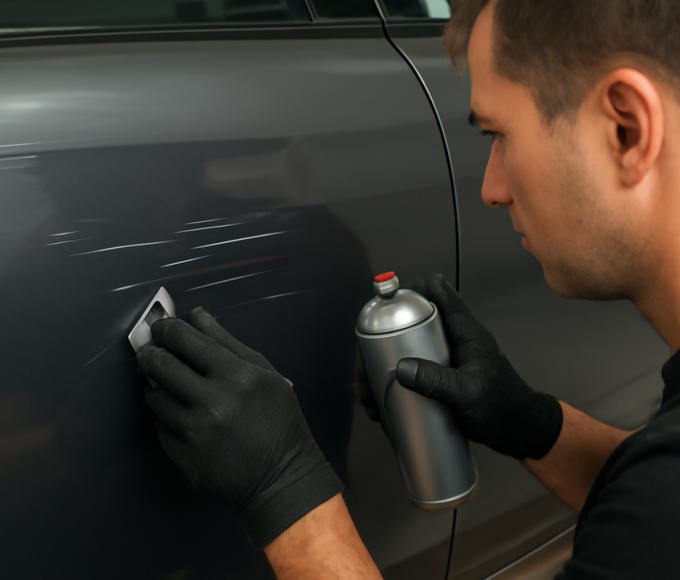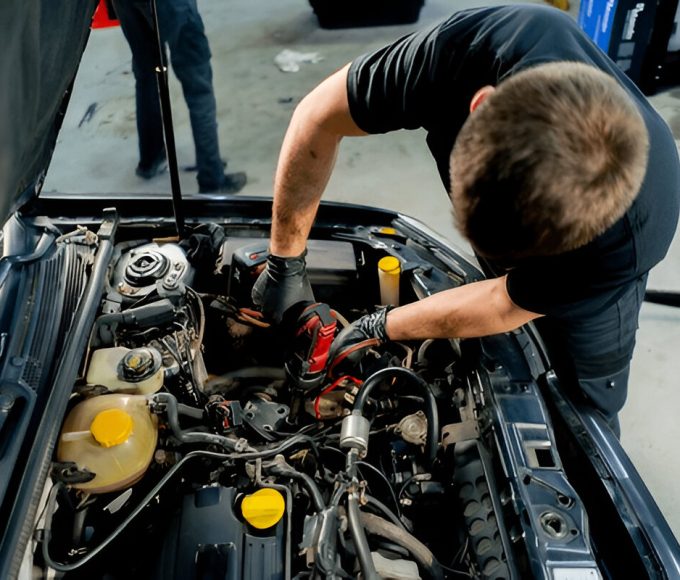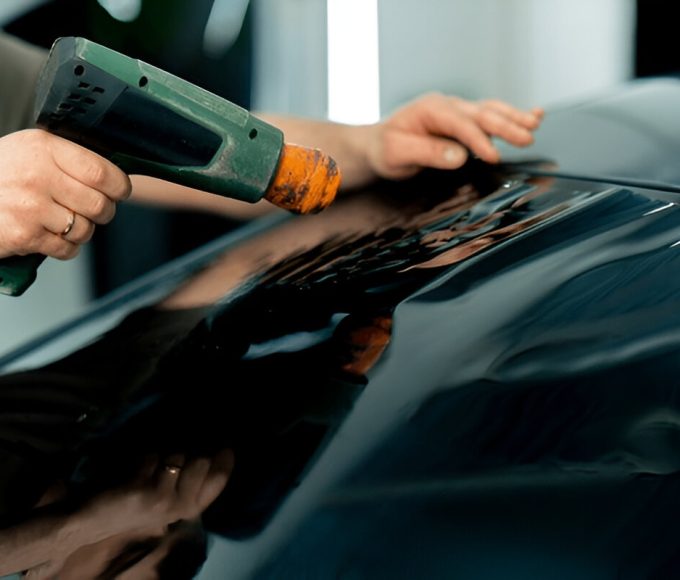The auto repair world isn’t just about changing oil or swapping out tires—it’s a career field packed with growth, opportunity, and serious earning potential. In fact, from entry-level technicians just starting their journey to master-certified pros and specialized experts, the industry offers multiple routes to success. Auto techs can carve out high-paying paths that reward skill, dedication, and continuous learning.
The truth is, the more you specialize, the higher you climb. So certifications, advanced diagnostics, and the ability to keep pace with today’s tech-driven cars consistently boost paychecks. This blog explains exactly where the money is, what roles top the pay charts, and the proven strategies you can use to climb the ladder. So, let’s dive into how much do auto techs make—and how you can make more.
What You Need To Know: How Much Do Auto Techs Make
Typical U.S. auto technician pay is around $25–$30/hour, with annualized earnings near $54k—$60k, depending on overtime and location. However, these averages shift significantly depending on specialization and market.
- Specialized paths (diesel, EV/hybrid, performance, transmissions) and leadership roles (foreman, service director) push compensation well above generalist rates. In addition, certifications and advanced diagnostics skills accelerate pay growth.
- Certifications (ASE, OEM) plus strong diagnostics, soft skills, and clean comeback rates are the fastest levers for raises. Therefore, investing in education and precision directly translates to higher earnings.
- Region matters: Markets with higher demand or cost of living pay more, and mobile work can boost margins by lowering overhead. As a result, location choices have an outsized impact on take-home pay.
In short, auto techs’ earnings depend most on specialization, efficiency, and the market. Ultimately, those who leverage all three will see the steepest career trajectory.
What Does “Auto Technician” Cover?
The question “how much do auto techs make?” will clarify the job. While many imagine oil changes and tire rotations, the modern technician monitors complex CAN networks, calibrates ADAS sensors, and uses scan tools the way surgeons use scopes. Consequently, their role has expanded well beyond simple maintenance.
Shops rely on accurate diagnostics, precise labor times, and consistent quality, so pay varies widely between entry-level generalists and niche specialists. In other words, skill depth and consistency often dictate earnings.
Baseline Ranges You’ll See In 2025
- Hourly: $25.73–$28 typical; broader market $10.82–$45.43.
- Weekly: ~$1,029–$1,111 at typical rates; more with overtime.
- Monthly: ~$4,459–$4,817.
- Annualized: ~$53,513–$57,813 for the typical cluster, with outliers higher or lower.
For context, the following table illustrates pay snapshots at different levels:
| Level | Hourly | Weekly | Monthly | Annual |
| Entry tech | $20 | $782 | $3,392 | $38,844 |
| Mid-level | $42 | $1,666 | $7,222 | $86,666 |
| Master-level | $35.57–$38 | $1,423–$1,501 | $6,165–$6,506 | $73,984–$78,078 |
The Roles That Pay the Most (And why)
If you’re asking, “How much do auto techs make?” the bigger question is which techs. Specialized skills command premium labor rates because they’re scarce, high-stakes, or both.
For Example:
- Hybrid and EV technician: High-voltage safety, battery diagnostics, inverter/charger work, and OEM software updates create a steep learning curve, so shops pay for it.
- Diesel technician: Heavy-duty platforms, turbos, emissions systems, and hydraulics add complexity and uptime pressure.
- Transmission specialist: Rebuilds, valve bodies, and programming require deep expertise; mistakes are expensive.
- Performance tuning specialist: ECU calibration, forced induction, and track prep demand precision and liability management.
- Automotive HVAC specialist: Thermal management and refrigerants (including new blends) require certification and correct tooling.
- Fleet mechanic: Predictable hours and steady work; platform efficiency lifts total earnings.
- Shop foreman/lead tech: Top-tier diagnostics + leadership; often paid a higher flat rate and/or team bonus.
- Service advisor (commissioned): Not a wrench-turning role, but upsell and CSI drive strong bonus potential.
- Service director/collision manager: P&L responsibility brings six-figure potential in healthy markets.
- Technical trainer: OEM or college roles trade flat-rate volatility for substantial salaries.
In short, specialization isn’t just about skill—it’s also about leverage in the labor market.
The Five Pay Levers You Control Most
Certifications That Matter
- ASE: Stack A1–A8 toward ASE Master to signal broad competence; add L1 for advanced diagnostics.
- OEM creds: Ford, Toyota, BMW, etc. certify platform-specific procedures—many dealers pay premiums.
- Safety & specialty: High-voltage, ADAS calibration, and refrigerant handling (Section 609) increase rates.
Efficiency And Billed Hours
- Track your effective labor rate (ELR): dollars paid ÷ flagged hours.
- Improve diagnostic flow (three-step test plans, known-good comparisons) to reduce comebacks and increase billed time.
- Use labor time guides as a baseline, then document legitimate add-ons (rust, seized fasteners, module programming).
Repair Mix & Specialization
Tilt your workload toward diagnostics, drivetrain, HVAC, diesel, or EV to bump average hours per RO.
Moreover, join teams that handle fleet contracts or collision/structural work where throughput is steady.
Soft Skills That Translate to Dollars
Clear write-ups, photos, and line-item explanations help advisors ethically sell the job, raising both close rate and gross.
Teach juniors; foreman paths often start with informal mentoring.
Market Selection and Mobility
Labor rates vary widely by state and city. Alaska and Arizona trend high, Illinois and Colorado sit mid-pack, and some coastal metros pay more but have higher costs.
Mobile work reduces overhead and can justify premium call-out pricing when you bring shop-grade tooling.
Regional Snapshots (Why Geography Pays)
Consider how rates follow demand and operating costs to move from the pay question to where technicians earn the most.
- Alaska: ~$78,000 average—remote logistics and higher living costs increase wages.
- Arizona: ~$76,022—heat-related failures and a growing car parc keep bays full.
- Texas: ~$65,268—huge vehicle population, diesel share, and fleet activity.
- Nebraska/Georgia/Vermont/California/Utah: ~$62k neighborhood—mix of demand, cost of living, and shop models.
- Illinois/Colorado: ~$58k–$60k—metro opportunities and varied rate cards.
- New Hampshire/New York: ~$57k—NYC pays higher rates, but costs offset some gains.
Pro Tip: Don’t just chase headline pay. Instead, compare effective after-tax income, typical hours, benefits, tool stipends, and advancement paths.
Pay Plans, Demystified
Flat Rate Vs. Hourly (And When Each Wins)
Flat rate rewards speed and consistency: you’re paid by flagged hours, not clocked hours. High producers thrive when the shop feeds steady work and parts flow. On the other hand, hourly (or salary) cushions slow days, training time, and complex diagnostics that don’t book many hours.
Hybrid Models You’ll See
Many shops blend hourly + productivity bonus, or flat rate with a guaranteed floor. Moreover, fleet and municipal shops pay a salary or an hourly rate with overtime. Performance shops may pay hourly plus commission on parts/tuning packages.
Bonuses And Spiffs That Add Up
Expect CSI bonuses for advisors, comeback-free streaks for techs, tool/equipment stipends, paid training, and state inspection/ADAS calibration premiums. Taken together, these extras make meaningful differences when calculating take-home pay.
Best Moves in Your First 18 Months
- Lock in ASE A1/A5/A8 as early goals; schedule the rest on a 12–18-month plan to reach Master.
- Build a photo-rich diagnostics portfolio, fix validations, and apply torque/angle specs.
- Shadow an EV/hybrid specialist once weekly; document HV lockout/tagout and insulation resistance testing.
- Learn scan tool fundamentals: data PIDs, bidirectional controls, basic programming, and topology maps.
- Track your comeback rate and resolve root causes (info gaps, test-step skips, parts quality).
- Before investing in niche tools, invest in must-have tools (torque wrenches, DVOM, service info access, torque angle gauges).
As a result, these steps create a strong foundation that accelerates promotions and raises.
Levers For Senior Techs to Hit Top-Tier Pay
- Own advanced diagnostics: oscilloscope captures, network faults, parasitic draws, and drivability.
- Add L1 and at least one OEM expert path; volunteer for module programming and ADAS calibrations.
- Mentor two juniors; negotiate a team bonus tied to billed hours and comeback-free ROs.
- Pivot into foreman or service director tracks if you enjoy workflow, QC, and coaching.
- Consider mobile specialty services (diagnostics, programming) for premium per-visit pricing.
- Capture metrics, such as billed hours/RO, ELR, close rate, and parts-to-labor ratio, to strengthen raise cases.
Eventually, senior techs who measure, mentor, and specialize unlock six-figure opportunities.
Using Labor Time Guides the Right Way.
Labor time guides are starting points, not the whole story. Therefore, calibrate them carefully against real-world variables:
- Vehicle condition: corrosion, broken fasteners, and aftermarket parts.
- Platform quirks: battery registration, coolant bleed procedures, and immobilizer relearning.
- Modern complexity: ADAS calibrations, high-voltage safety checks, and software updates add legitimate time.
- Documentation: photos of seized hardware and scan tool prompts justify add-on labor ethically.
When an RO includes programming, calibrations, or unusual access steps, annotate your story so service advisors can explain value without overselling.
Career Escalators: From Bay to Boardroom
If you want to start with pay, ask how to change your category entirely.
For Instance:
- Technical trainer: Turn expertise into curriculum, certification prep, and platform-specific workshops.
- Mechanical designer or engineer: With additional schooling, shift to R&D, tooling, or component design.
- Collision repair management: Lead estimates, insurer coordination, and throughput in high-volume centers.
- Service leadership: As a service director, own P&L, hiring, and customer experience; six-figure packages aren’t rare in strong markets.
In short, thinking beyond the bay can multiply your career ceiling.
Negotiation Playbook You Can Use This Week
- Assemble your proof. Printouts or screenshots of ASE/OEM badges, training hours, and comeback-free streaks.
- Bring numbers. Your 90-day billed hours, average diagnostic time to fault, and ELR benchmarked to market rates.
- Present options. If the flat rate is volatile, propose a hybrid with a soft floor and a higher top-end bonus.
- Tie asks for value. “With L1 and ADAS calibration capability, I reduce sublets and increase same-day delivery.”
- Know the market. Have state/city labor rate data and at least two competitor offers (or posted ranges).
- Time it right. Post-CSI wins, quarter-end throughput peaks, or after a hard-to-fill specialty credential.
Consequently, preparation plus timing often shifts negotiations in your favor.
Tooling And Tech That Raise Your Ceiling
- Quality scan tool + OEM subscriptions: Faster path to root cause; fewer parts darts.
- Scope and current probe: Pro-level drivability and parasitic draw diagnosis.
- ADAS calibration gear access: Even if shared across stores, being the go-to tech sets your rate.
- Safety gear for HV: Insulated gloves, mats, sleeves, and a disciplined lockout/tagout routine.
- Workflow software: Photos, videos, and digital inspections (DX) improve approvals and ARO.
As a result, your toolkit becomes a direct driver of higher earnings.
Common Mistakes That Quietly Cap Your Income
Chasing every job on the board instead of leaning into a specialty slows your progression. Likewise, skipping documentation hurts approvals and exposes you to comebacks that erase hours you worked hard to flag. Another critical limiter is ignoring training windows; when the shop is slow, treat OEM modules and ASE prep like paid investments.
Finally, underpricing mobile work or failing to include travel/setup time can trap you at a lower effective rate than an in-bay tech. Therefore, always build quotes that reflect total value delivered—including pre-diagnosis, calibrations, and quality-control test drives. If you can quantify those elements, you’ll protect both your margins and your reputation, and you’ll be positioned to answer the question of how much do auto techs make with a number that climbs every quarter.
FAQs That Shorten Your Path to a Raise
How much do auto techs make with ASE Master and L1?
Typically, more than non-certified peers—often $3–$7/hour higher base or stronger flat-rate multipliers, plus priority dispatch on complex work.
Where should I relocate?
Aim for metros with high car counts, rising labor rates, and OEM training access. Nevertheless, balance headline pays with rent, commute, and benefits.
Do advisors out-earn techs?
High-performing advisors can eclipse many techs in healthy stores due to commission structures and CSI bonuses.
Riving Your Future: Turning Wrenches into Wealth
The question isn’t just “How much do auto techs make?”—it’s about how much you can make when you correctly leverage your skills, certifications, and career choices. Whether you specialize in EVs, step into leadership, or go mobile with your tools, the auto repair industry offers unlimited potential. Stay current, keep learning, and always aim higher—because the road to success in this field is wide open for anyone ready to take the wheel.

















Leave a comment